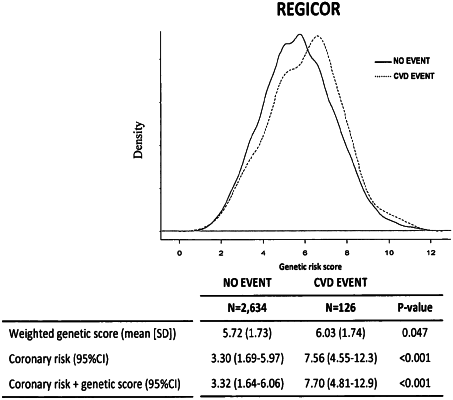| CPC C12Q 1/6827 (2013.01) [A61P 9/00 (2018.01); C12Q 1/6883 (2013.01); G16H 50/30 (2018.01); C12Q 2600/112 (2013.01); C12Q 2600/118 (2013.01); C12Q 2600/156 (2013.01)] | 13 Claims |

|
1. A method comprising
a) obtaining a biological sample isolated from a human subject,
b) detecting the identity of at least the nucleotide at position 27 within the nucleic acid sequences of SEQ ID NOs: 2, 3, 5, and 8 in the biological sample isolated from the human subject to detect the presence of polymorphisms at least at said position, wherein detecting the identity of the nucleotide at position 27 within the nucleic acid sequences of SEQ ID NOs: 2, 3, 5, and 8 is by direct sequencing, primer extension, probe hybridization, nucleic acid amplification, or restriction endonuclease digestion and size separation,
c) calculating a risk of the human subject having a cardiovascular disease or event, using a cardiovascular risk function, wherein calculating said risk comprises combining:
a risk conferred by one or more classical coronary risk factors, based on respective weighted values of each of the one or more classical coronary risk factors for the human subject; and
a risk conferred by the detected polymorphisms, based on a weighted number of risk alleles present for each polymorphism,
d) selecting a human subject evaluated in step c) as having an elevated risk for preventative and/or therapeutic treatment for a cardiovascular disease or event, and
e) administering to the selected human subject an agent with hypolipemic capabilities, an anticoagulant, an antiplatelet agent, a thrombolytic agent, an antithrombotic, an antiarrhythmic agent, an agent that prolongs repolarization, an antihypertensive agent, a vasodilator, an antihypertensive, a diuretic, an inotropic agent, and/or an antianginal agent.
|